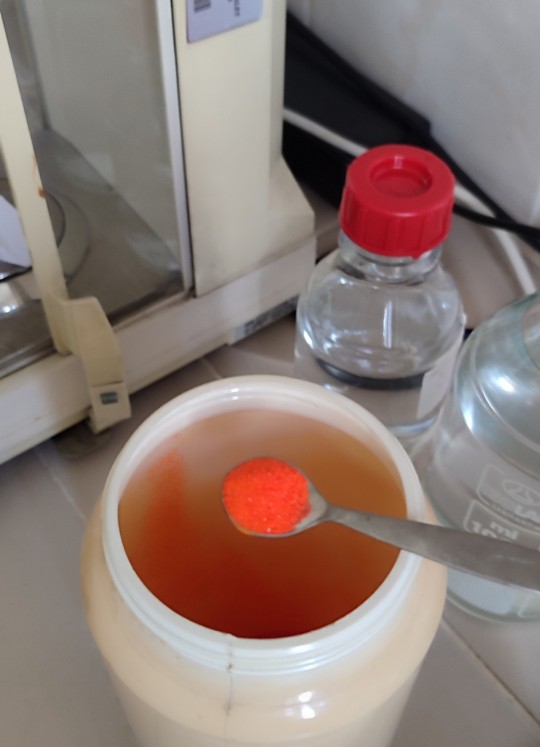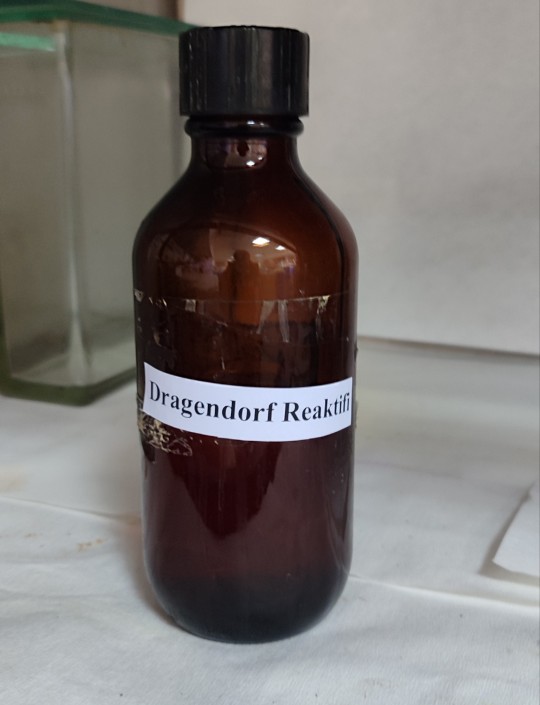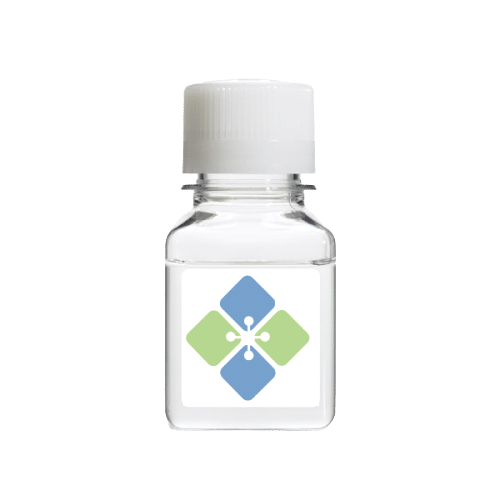#Dragendorff's reagent
Text
Kim demiş Fantastik şeyler bilimsel olamaz diye 🔥🐲😋
Dersimiz Toksikoloji ☣️🧪⚗️
Turuncu şeylerin beni çektiği bir gerçek 😁🧡💥🔥 bu gördüğünüz arkadaşın adı Dragendorff reaktifi, öğrenciler için bazikler konusu deneylerinde kullanılıyor burda dikkatinizi çekmek istediğim şey rengi ve püskürtülünce alev püskürtmüş gibi turuncu leke bırakması ki ismiyle müsemma 😅🧡🔥🐲
Dersimizi dinlediğiniz için teşekkür ederiz sınavda çıkabilir 😋😎😂😂






#potassium dichromate#potasyum dikromat#Dragendorff's reagent#Turuncular aşkına#dragons#Toksikoloji#positivity#funny#Herşey bilimsel olabilir#Test edildi onaylandı#positive science#science#khaleesi#game of thrones
128 notes
·
View notes
Text
Dragendorff Reagent
Dragendorff Reagent
Catalog number: B2012871
Lot number: Batch Dependent
Expiration Date: Batch dependent
Amount: 50 mL
Molecular Weight or Concentration: N/A
Supplied as: Lyophilized Powder
Applications: molecular tool for various biochemical applications
Storage: RT
Keywords: TLC
Grade: Biotechnology grade. All products are highly pure. All solutions are made with Type I ultrapure water…

View On WordPress
0 notes
Text
What Are Alkaloids?
What are alkaloids?
Alkaloids are a class of basic, naturally occurring organic compounds that contain at least one nitrogen atom. Alkaloids have diverse and important physiological effects on humans and other animals.
Well-known alkaloids include morphine, strychnine, quinine, ephedrine, and nicotine, piperine, caffeine etc. Many alkaloids have commercial importance as they have different medicinal properties.
Alkaloids are found primarily in plants and are especially common in certain families of flowering plants. Alkaloid names generally end in the suffix -ine, a reference to their chemical classification as amines. In their pure form most alkaloids are colourless, non-volatile, crystalline solids.
Methods for extraction of alkaloids:
Alkaloids can be extracted from plant tissues using weak acidic solvents and can then be selectively precipitated from such extracts using ammonia. Alkaloids can be extracted by various techniques like liquid liquid extraction (LLE), Soxhlet method. After extraction, alkaloids can be separated by electrophoresis, chromatographic techniques like column chromatography, HPLTC (High Performance Thin Layer Chromatography) etc.
How HPTLC can be useful for detection of alkaloids?
HPTLC is one of the best suited, very convenient, economic and fast technique for the detection and separation of alkaloids. CAMAG and Anchrom lab has developed many methods for detection and quantification of alkaloids like morphine, caffeine, piperine, codeine etc.
As many alkaloids do not show any response in UV, they can be detected by derivatization process and using derivatizing reagent like Dragendorff’s reagent which is very specific derivatizing reagent used for detection of alkaloids only. Derivatization process in HPTLC is very simple and easy to perform.
Derivatization can be done by immersion technique by using CAMAG immersion device or CAMAG Derivatizer which requires very little 2-4 ml of derivatizing reagent.
Let us take one example for detection and quantification of piperine by HPTLC:
Quantification of Piperine in black pepper fruit and test for minimum content of piperine (>3%-Ph. Eur.)
Image at R254nm:


CAMAG Lab has developed HPTLC method that separates piperine from other constituents of black pepper fruits. The content of piperine is either determined in a test for minimum content (MCT) of 3% or by an assay using a five-point calibration curve.
Anchrom Enterprises Pvt. Ltd is one of the leaders in HPTLC in food analysis. Please contact us at [email protected] for HPTLC analysis of plant extracts, drugs, ingredients in cosmetics, and forensic science.
0 notes
Text
Dragendorff′s Reagent Spray Solution
Dragendorff′s Reagent Spray Solution
Catalog number: B2012774
Lot number: Batch Dependent
Expiration Date: Batch dependent
Amount: 50 mL
Molecular Weight or Concentration: N/A
Supplied as: Solution
Applications: molecular tool for various biochemical applications
Storage: RT
Keywords: Dragendorff′s reagent
Grade: Biotechnology grade. All products are highly pure. All solutions are made with Type…

View On WordPress
0 notes